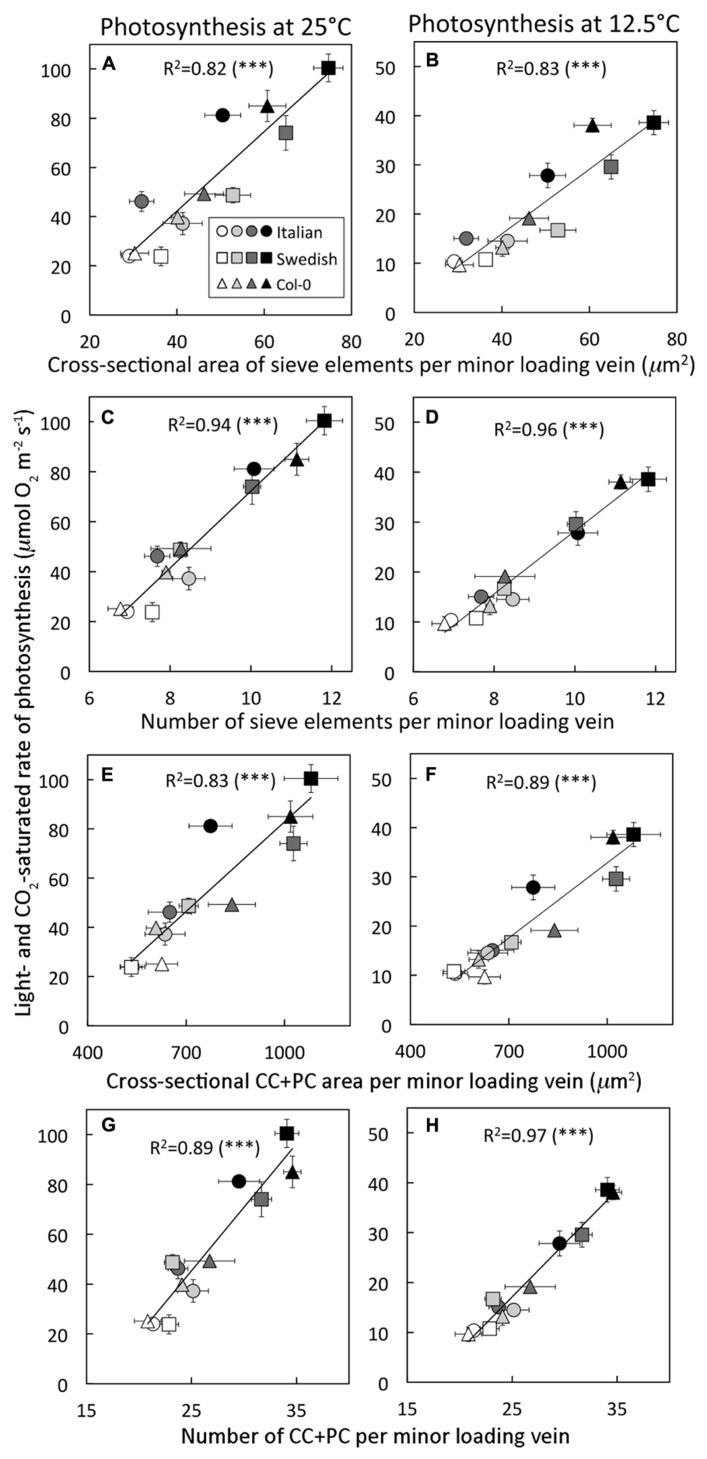FIGURE 4.
Light- and CO 2-saturated rate of oxygen evolution, determined at either 25°C or 12.5 °C, versus (A,B) the cross-sectional area of sieve elements per minor loading vein, (C,D) the number of sieve elements per minor loading vein, (E,F) the cross-sectional area of companion and phloem parenchyma cells (CC + PC) adjacent to sieve elements per minor loading vein, and (G,H) the number of companion and phloem parenchyma cells adjacent to sieve elements per minor loading vein for three A. thaliana ecotypes grown at two leaf temperatures and two PFDs. Arabidopsis thaliana lines (Italian ecotype, circles; Col-0, triangles; Swedish ecotype, squares) were grown under four different conditions (24–26°C and 400 μmol photons m-2 s-1, open symbols; 24–26°C and 1000 μmol photons m-2 s-1, light gray symbols; 12–16°C and 400 μmol photons m-2 s-1, dark gray symbols; 12–16°C and 1000 μmol photons m-2 s-1, black symbols). Mean ± standard deviation shown for light- and CO2-saturated rates of photosynthetic oxygen evolution, and mean ± standard error of the mean shown for number and cross-sectional area of cells per minor loading vein (n = 4 plants). Linear regression lines are shown with the following equations: (A) y = 1.6x - 22.4, (B) y = 0.7x - 10.4, (C) y = 15.4x - 81.9, (D) y = 6.3x - 34.8, (E) y = 0.12x - 38.7, (F) y = 0.05x - 19.83, (G) y = 5.1x - 82.1, and (H) y = 2.1x - 36.4. All relationships were significant at ***P < 0.001.

